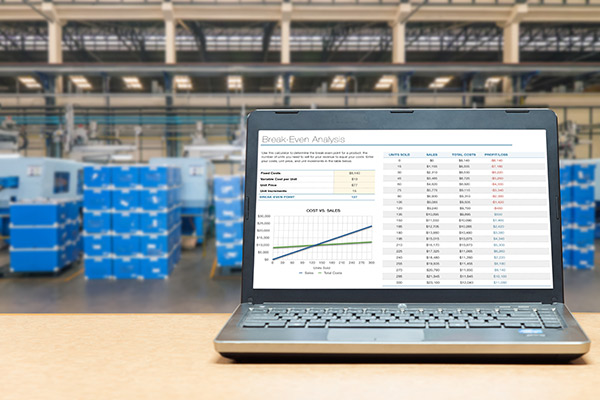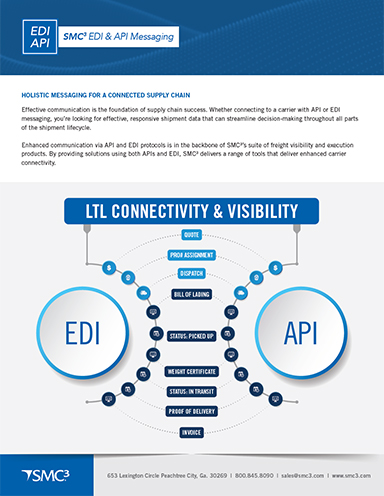Risk Management in Uncertain Times with Dynamic Freight Pricing
There is no denying that uncertainty is an ever-present force in less-than-truckload (LTL) shipping.
The one thing we can be certain of is this—there will always be some level of uncertainty in less-than-truckload (LTL) shipping. Freight patterns can shift and cause sudden capacity constraints for carriers. Monster storms can pop up and bring transportation and deliveries to a standstill. An abrupt shortage of equipment like chassis can halt container movement. An unexpected lack of drivers can leave LTL trucks idle.
This is the world the LTL industry has always lived in and it’s not likely to change in the future. But events like these don’t have to be a source of angst among carriers and shippers. In a recent article in FreightWaves, SMC3 shared how transparency into market conditions and dynamic freight pricing can help carriers and shippers forge symbiotic relationships.
Conventional vs. Dynamic Freight Pricing
The conventional approach to managing freight costs is through fixed contracts and common carrier pricing agreements. But this doesn’t allow carriers to adjust pricing when sudden changes like market conditions or internal issues arise.
With dynamic freight pricing, LTL carrier pricing is flexible and responsive to the many factors that can impact the industry. Shifting to dynamic pricing gives carriers the flexibility to offer real-time pricing and the ability to make changes at a moment’s notice that reflect current market conditions.
Dynamic pricing also benefits shippers. Factors such as discounting, FAK structures and complex base rates are removed from the equation. Shippers simply know they are getting the best price for shipping their freight—which provides transparency and can improve their relationship with carriers.
How Dynamic Freight Pricing Works
Dynamic pricing provides access to pricing intelligence in real-time. With SMC3’s Dynamic PriceBuilder™, which is the only LTL technology tool available that factors in carrier-specific costs, carriers can respond in real-time to local events and disruptions and adapt to changing cartage and interline costs. They can also generate and manage targeted transactional spot and LTL rates, quickly respond to operational needs and smooth the peaks and valleys of fluctuating business volumes.
Additionally, Dynamic PriceBuilder allows carriers to change business rules in real-time without impacting past quotes, adjust prices for hundreds of customers instantly, create multiple data sets to vary prices across customer segments and make data-driven price changes.
Dynamic PriceBuilder’s fully hosted, carrier-managed business rules engine is coupled with the carrier’s Cost Intelligence System (CIS®) prospective cost model to drive timely, targeted and precise high-speed analytics to generate and manage LTL rates. It’s 10 times faster than conventional carrier API connections and can scale to support the volume of quoting and rating needs of the LTL industry.
Dynamic Freight Pricing Drives Better Decisions
Without Dynamic pricing, it’s difficult for carriers to respond quickly to internal and external events. There are so many factors to consider like available capacity, available staff and the cost to serve that goes into quoting LTL freight shipments. Plus, carriers need the flexibility to maximize revenue potential—lowering prices to attract more business when there’s abundant capacity and raising rates when capacity is tight.
With Dynamic PriceBuilder, carriers can:
- Manage yield versus volume with on-demand control of price changes.
- Access levers, including location, weight, density, day of the week, and calendar data.
- Target multiple customer segments with different dynamic price programs.
- Customize accessorial charges by lane, location, weight break, etc.
Transparency and Technology—A Winning Combination
Having transparency into market conditions and dynamic freight pricing is a win-win for both carriers and shippers. On the carrier side, they can respond instantaneously to market changes and structure their pricing to provide a fair rate while also gaining a competitive edge. They can also generate and manage transactional spot and LTL rates as well as change business rules at any time without affecting past quotes.
For shippers, transparency in freight pricing helps them seek out the best price for their shipments given market conditions. Dynamic freight pricing also leads to a shipper getting a price based on all of the characteristics of their shipment, which helps them better manage their transportation spend.
Article Topics
SMC3 News & Resources
Mastering LTL Shipping: Strategies to Become the Carrier’s Top Choice Career Success in LTL: Insights from Industry Veterans Effective Strategies for Last Mile Returns in LTL Logistics SMC3 Mercury Gate Case Study - Improving Workflows and Enhancing Efficiency with LTL APIs SMC3: Is Technology a Competitive Advantage in the Modern Supply Chain Industry? Armada’s Prather examines the disconnect between the freight economy and the macro economy at SMC3 JumpStart 2024 SMC³’s Solution to the Logistics Industries Talent Problem More SMC3Latest in Transportation
Mexico Continues As America’s Top Trade Partner in March How E-Commerce Deliveries Are Failing Today’s Consumer Study Uncovers Massive Pollution From Ship Scrubber Discharge Amazon Rolls Out 50 New Electric Volvo Trucks in California Impending Canadian Rail Strike Could Paralyze Country’s Economy Auto Parts Makers Receive $100 Million to Help Ease Switch to Electric April Employment Update: Trucking Sector Faces 300 Job Losses More Transportation














